Description
A hybrid beacon, also known as a High-intensity Activated CrosswalK (HAWK), consists of a signal-head with two red lenses over a single yellow lens on the major street, and pedestrian and/or bicycle signal heads for the minor street. There are no signal indications for motor vehicles on the minor street approaches. Hybrid beacons were developed specifically to enhance pedestrian crossings of major streets. However, several cities have installed modified hybrid beacons that explicitly incorporate bicycle movements. The information provided here focuses on the application of hybrid beacons for bicyclists.
Hybrid beacons are used to improve non-motorized crossings of major streets in locations where side-street volumes do not support installation of a conventional traffic signal (or where there are concerns that a conventional signal will encourage additional motor vehicle traffic on the minor street). Hybrid beacons may also be used at mid-block crossing locations (e.g., trail crossings).
The hybrid beacon can significantly improve the operations of a bicycle route, particularly along bicycle boulevards. Because of the low traffic volumes on these facilities, intersections with major roadways are often unsignalized, creating difficult and potentially unsafe crossing conditions for bicyclists. Hybrid beacons may be supplemented with a bike signal and signal detection for the minor street approaches to facilitate bicycle crossings.
Operations
Hybrid beacon operations are significantly different from the operations of standard traffic control signals. The figure below illustrates the general sequence of phases for a hybrid beacon as applied for pedestrian crossings. The primary difference compared to a standard signal is that a hybrid beacon displays no indication (i.e., it is dark) when it is not actuated. 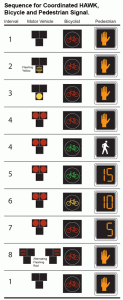 Upon actuation (by a pedestrian or bicyclist on the minor street), the beacon begins flashing yellow, changes to steady yellow, then displays a solid red indication with both red lenses. During the solid red phase, drivers must stop and remain stopped, as with a standard traffic signal.
Upon actuation (by a pedestrian or bicyclist on the minor street), the beacon begins flashing yellow, changes to steady yellow, then displays a solid red indication with both red lenses. During the solid red phase, drivers must stop and remain stopped, as with a standard traffic signal.
Prior to returning to no indication, the beacon displays an alternating flashing “wig-wag” red that allows drivers to stop and proceed when clear, as they would with a stop sign. To maximize safety when used for bicycle crossings, this phase should be very short and occur after the pedestrian signal head has changed to a solid “DON’T WALK” indication as bicyclists can enter an intersection quickly.
Click on the images below to view 3D concepts of hybrid beacon installations.
Benefits
- Can be implemented when a conventional signal warrant is not met or where a conventional traffic signal is not desired due to the potential to increase traffic volumes on minor street approaches. Read More+
“This application provides a pedestrian crossing without signal control for the side street because signal control on the side street can encourage unwanted additional traffic through the neighborhood.”
Fitzpatrick, K. and Park, E.S. (2010). Safety Effectiveness of the HAWK Pedestrian Crossing Treatment. Federal Highway Administration. Publication No. FHWA-HRT-10-042.
- Creates gaps for bicyclists to cross busy streets.
- Is more flexible for bicyclists than a full signal as bicyclists do not have to actuate it if they find ample crossing opportunities during off-peak conditions. Read More+
The need for a signalized crossing of a collector at a minor street if often limited to peak traffic times. A full signal would have the unintended consequence of unnecessarily delaying bicyclists wishing to cross the collector during off-peak conditions as well as motorists on the main street, who would have to wait through an otherwise unnecessary full signal cycle.
- Associated with very high driver compliance (studies show greater than 95% driver compliance with red indications). Read More+
“The three devices designated as red signal or beacon had statistically similar mean compliance rates. These devices include the midblock signal, half signal, and HAWK signal beacon. All three devices had average compliance rates greater than 97 percent.”
“A compliance rate above 94 percent exists, regardless of the number of lanes on the facility.”
Fitzpatrick, K., Turner, S., Brewer, M., Carlson, P., Lalani, N., Ullman, B., Trout, N., Park, E.S., Lord, D., and Whitacre, J. (2006). Improving Pedestrian Safety at Unsignalized Crossings. TCRP/NCHRP Report 112/ 562, Transportation Research Board, Washington, DC.
- Improves street crossing safety. Read More+
“A 29 percent reduction in total crashes was achieved, which was statistically significant at the 95 percent confidence level.”
“A 69 percent reduction in pedestrian crashes was achieved, which was statistically significant at the 95 percent confidence level.”
Fitzpatrick, K. and Park, E.S. (2010). Safety Effectiveness of the HAWK Pedestrian Crossing Treatment. Federal Highway Administration. Publication No. FHWA-HRT-10-042.
Typical Applications
- Where bike routes intersect major streets without existing signalized crossings.
- Where off-street bicycle or pedestrian facilities intersect major streets without existing signalized crossings.
- At mid-block crossings of major roadways with high bicycle or pedestrian volumes.
Design Guidance
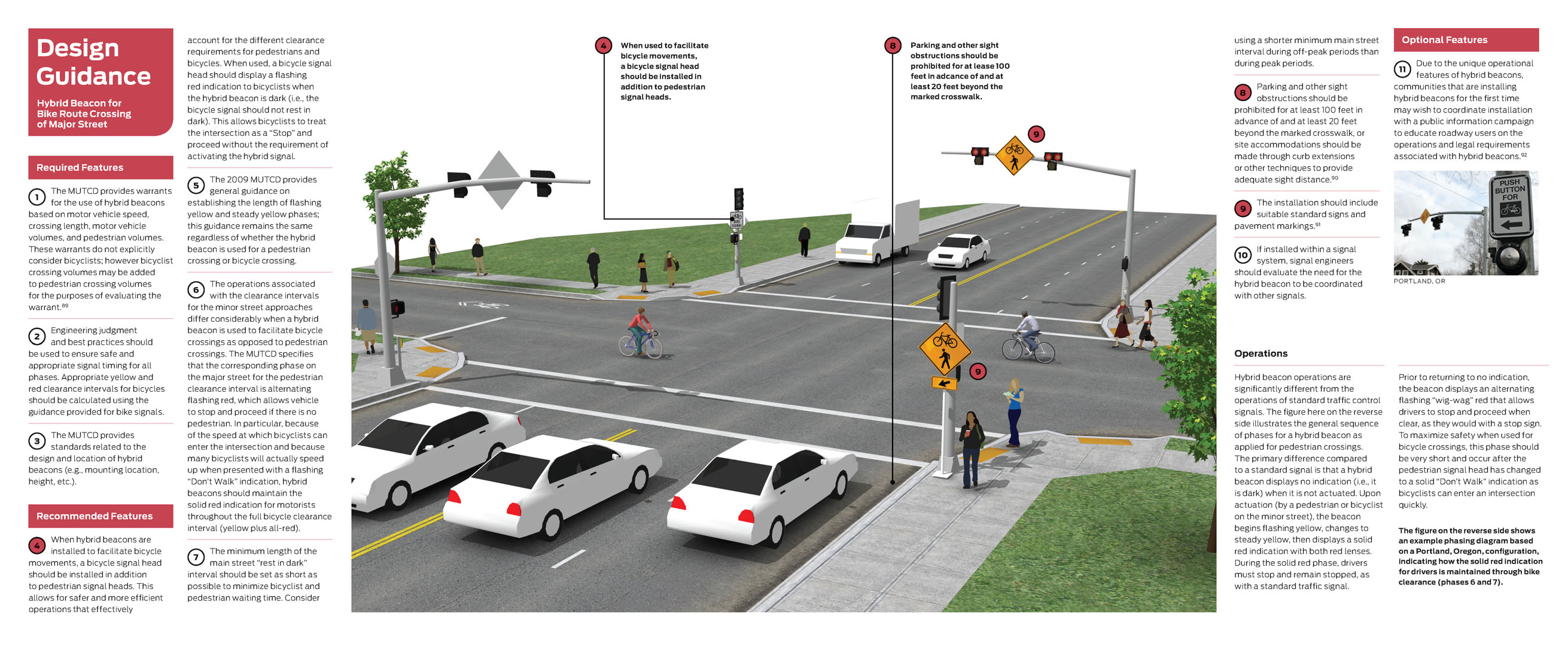
Chapter 4F of the 2009 MUTCD provides guidance and standards for hybrid beacons at unsignalized and mid-block pedestrian crossings, but does not consider hybrid beacons for bicyclist crossings. The guidance provided here is intended to supplement the MUTCD to cover the use of hybrid beacons specific to bicyclist crossings. Where hybrid beacons are installed as pedestrian crossing improvements only, practitioners are encouraged to follow 2009 MUTCD provisions.
| Recommended Features |
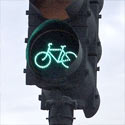 |
When hybrid beacons are installed to facilitate bicycle movements, a bicycle signal head should be installed in addition to pedestrian signal heads. This allows for safer and more efficient operations that effectively account for the different clearance requirements for pedestrians and bicycles. When used, a bicycle signal head should display a flashing red indication to bicyclists when the hybrid beacon is dark (i.e., the bicycle signal should not rest in dark). This allows bicyclists to treat the intersection as a “Stop” and proceed without the requirement of activating the hybrid beacon. |
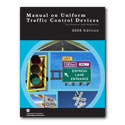 |
The 2009 MUTCD provides general guidance on establishing the length of flashing yellow and steady yellow phases; this guidance remains the same regardless of whether the hybrid beacon is used for a pedestrian crossing or bicycle crossing. |
 |
The operations associated with the clearance intervals for the minor street approaches differ considerably when a hybrid beacon is used to facilitate bicycle crossings as opposed to pedestrian crossings. The MUTCD specifies that the corresponding phase on the major street for the pedestrian clearance interval is alternating flashing red, which allows vehicle to stop and proceed if there is no pedestrian. In particular, because of the speed at which bicyclists can enter the intersection and because many bicyclists will actually speed up when presented with a flashing “DONT WALK” indication, hybrid beacons should maintain the solid red indication for motorists throughout the full bicycle clearance interval (yellow plus all-red). Read More+
The following figure shows an example phasing diagram based on a Portland, Oregon, configuration, indicating how the solid red indication for drivers is maintained through bike clearance (phases 6 and 7).
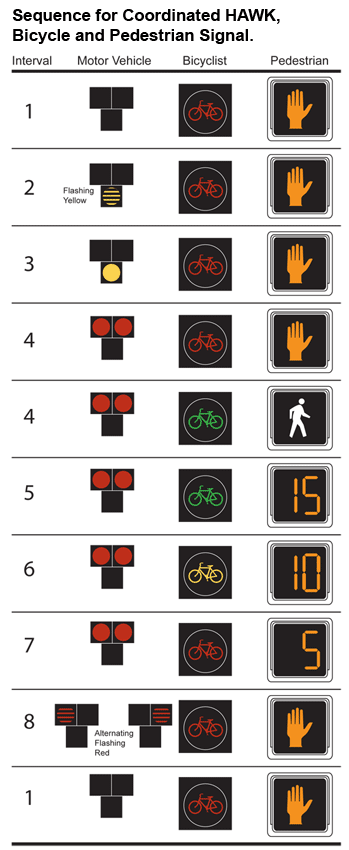
|
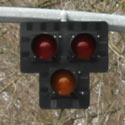 |
The minimum length of the main street “rest in dark” interval should be set as short as possible to minimize bicyclist and pedestrian waiting time. Consider using a shorter minimum main street interval during off-peak periods than during peak periods. |
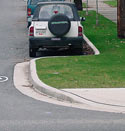 |
Parking and other sight obstructions should be prohibited for at least 100 feet in advance of and at least 20 feet beyond the marked crosswalk, or site accommodations should be made through curb extensions or other techniques to provide adequate sight distance. Read More+
Federal Highway Administration. (2009). Manual on Uniform Traffic Control Devices.
|
 |
The installation should include suitable standard signs and pavement markings. Read More+
Federal Highway Administration. (2009). Manual on Uniform Traffic Control Devices.
|
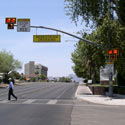 |
If installed within a signal system, signal engineers should evaluate the need for the hybrid beacon to be coordinated with other signals. |
| Optional Features |
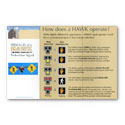 |
Due to the unique operational features of hybrid beacons, communities that are installing hybrid beacons for the first time may wish to coordinate installation with a public information campaign to educate roadway users on the operations and legal requirements associated with hybrid beacons. Read More+
The City of Madison published and distributed a brochure describing the function and operation of the Pedestrian Hybrid Beacon.
City of Madison, Wisconsin. Pedestrian & Bicyclist Hybrid Beacon.
|
Maintenance
- Hybrid beacons are subject to the same maintenance needs and requirements as standard traffic signals.
- Signing and striping need to be maintained to help users understand the relatively unfamiliar traffic control.
Treatment Adoption and Professional Consensus
Hybrid beacons have been implemented in several US cities, including the following:
- Alexandria, VA
- Bloomington, IN
- Fort Collins, CO
- Madison, WI
- Miami, FL
- Salt Lake City, UT
- Phoenix, AZ
- Portland, OR
- Tucson, AZ
- Washington, DC
Click to see the complete reference material for this treatment.